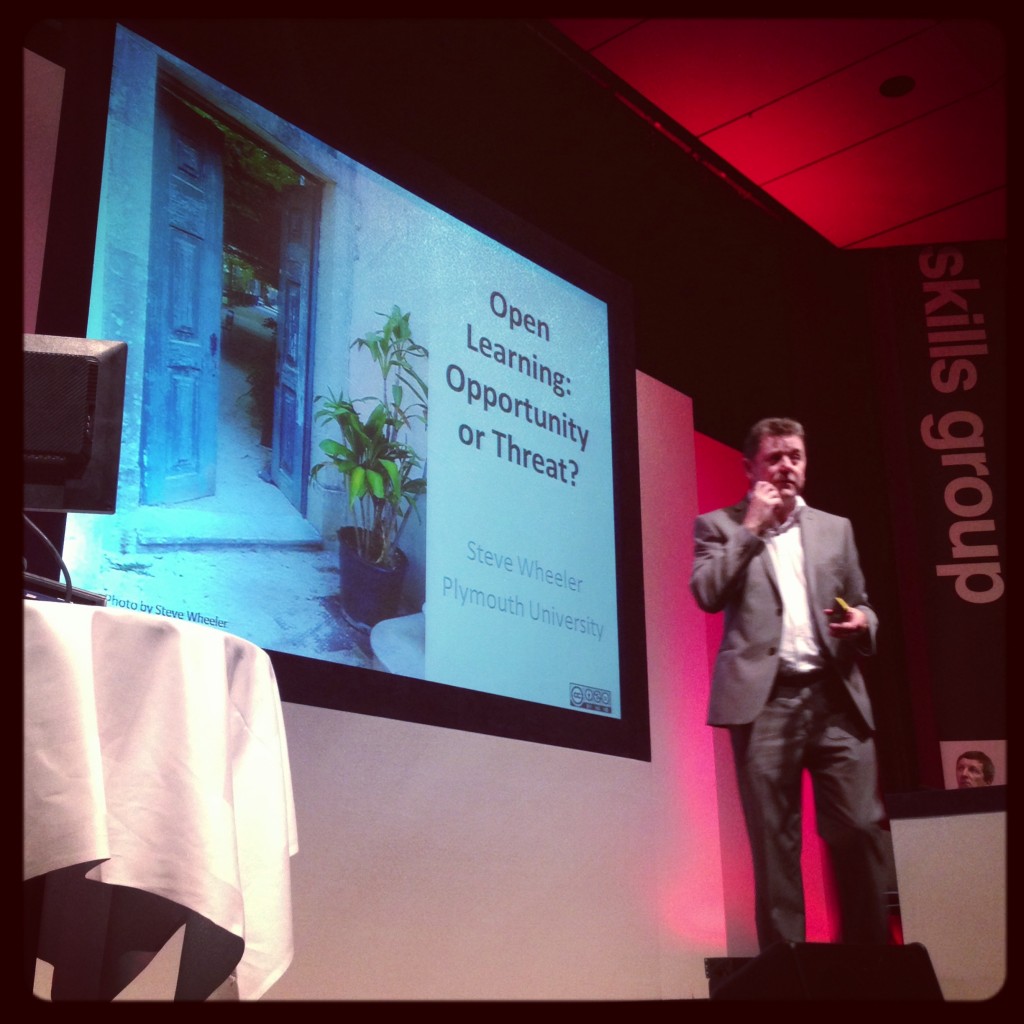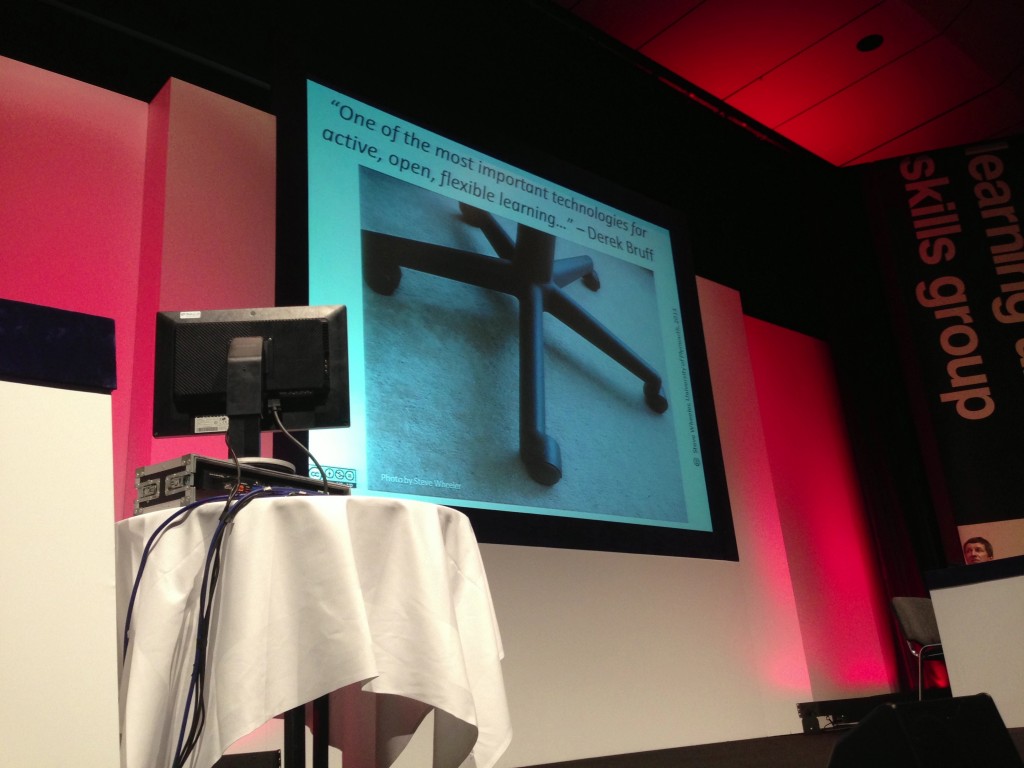These are live blog notes so will be brief and may contain typos!
Steve Wheeler looked at open learning and whether L&D professionals should be viewing it as an opportunity or threat.
He started off by asking, “How open are you as a trainer?” Wheeler asks if trainers leave the door open when they do their training sessions. We have grown up following rules and have trained following rules.
But we are in the business of learning and breaking the rules to fit the needs of your learners.
Quotes Peter Drucker: “The greatest danger in times of turbulence is not the turbulence. It is to act with yesterday’s logic.”
And society is changing. He shows a picture of Obama at the Brandenburg Gate, Berlin. The image shows thousands of people and loads taking pictures on mobiles and even a laptop. The point? That people are creating and sharing content thanks to ubiquitous connectivity. This is our reality and it supports a more open approach to learning.
Shows slide of his learners taking pictures instead of writing down notes. This is how his learners learn, he says.
We need to a new understanding of open content – who is creating it it, where it has come from, what it means to you.
Talks about ‘selflies’ – self-portraits, showing people who they are and sharing on Facebook. People want to share who they are he says. We are more open.
Then talks about that holds us back. For example, fixity – we constrain our thinking. And can we make creative connections? Does school knock it out of us. When children starts school they are not constrained in their thinking. Need to think openly and creative in our thinking because we do less of this thanks to the education system.
What does it mean to be open?
Sharing
You are what you share, says Chalres Leadbetter.
Breaking down the silos
We teach subjects in school – we do not teach students. Why don’t we break down subject silos. Gave example of Skipton Girls’ School – an engineering college that blends subjects e.g. musicc and engineering. A young student there says that learning in this way helps to make it easier to ‘understand the world’. Why don’t we do more of this, asks Wheeler.
He says we are shifting to informal learning. We will always need learning professionals. Roles are changing but L&D will always be required.
Quote from Derek Bruff: ‘One of the most important technologies for active, flexible open learning is a . . . . chair with wheels on it (he showed an image of the bottom half of an office chair at this point). Not sure that is the quote, but you get the point (hopefully)
Like the chair, we need to be mobile in open learning environments. Then went on to talk about the architecture of participation – web 2.0 and user generated content is driving this.
Then talked through flow, and the zone of proximal learning – see image:
Personal learning networks are also critical in open learning – but you need to give to get. They can be liberating – connecting with new people not otherwise connected with. We need to harness the power of networks, Wheeler says.
Free and open content
Open University was the university of the second chance. It was open i.e. no qualifications. That’s where Wheeler got a degree. makes point about open access institutions then moves on to open content – you are allowed to copy it, just follow the rules.
Talks about creative commons and using copyright free content. This has emerged through open networks. Goes on to talk about rhizomatic learning and being involved in networks of learning. We are all nodes of production – creating and sharing content.
Then looked at some theorists supporting open learning.
Looked at Karalis on situated and transformative learning and different types of learning.
Jack Merizow – transformational learning
Self-organising learning spaces – groups in which no one is in charge e.g. wikipedia. Open and free.
Wheeler then talked about massive open online courses – MOOCs. There are two types:
- Connectivist MOOCs – open and free – student drove the activities
- x MOOcs – more commercial – you pay for accreditation
The idea behind MOOCs is that the community becomes the curriculum. Suggested watching this video:
Wheeler then talked about talked about Open Badges from the Mozilla Foundation – new form of accreditation.
Ended by showing his work translated into French and Spanish making the point that open content meant others could translate his work and bring it to new audiences. This is powerful. Also, if you look on the Wikipedia page for punk godfather Malcolm Maclaren you will see an image of the man taken b y Steve Wheeler six months before he died.
Wheeler’s whistle stop tour of the development of open learning and open content ended in a Q&A session which looked at the future of education, accreditation and sharing content on closed platforms. Wheeler’s advice: create and share.
e
Flip the learner not the cl;assroom. I,m there to help them learn – an ope approach to learning
Paulo Freire






